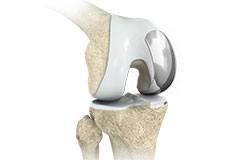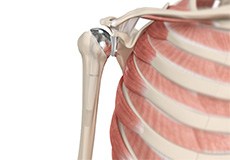Joint Replacement
Joints are formed by the ends of two or more bones connected by tissue called cartilage. Healthy cartilage serves as a protective cushion, allowing smooth and low-friction movement of the joint. If the cartilage becomes damaged by disease or injury, the tissues around the joint become inflamed, causing pain. With time, the cartilage wears away, allowing the rough edges of bone to rub against each other, causing more pain.
When only some of the joint is damaged, a surgeon may be able to repair or replace just the damaged parts. When the entire joint is damaged, a total joint replacement is done. To replace a total joint, a surgeon removes the diseased or damaged parts and inserts artificial parts, called prostheses or implants.
Knee

Total Knee Replacement
Total knee replacement, also called total knee arthroplasty, is a surgical procedure in which the worn out or damaged surfaces of the knee joint are removed and replaced with artificial parts.

Partial Knee Replacement
Partial knee replacement is a minimally invasive surgery in which only the damaged compartment of the knee is replaced with an implant. It is also called a unicompartmental knee replacement.
Shoulder

Shoulder Joint Replacement
Total shoulder replacement surgery is performed to relieve these symptoms. In this surgery, the damaged articulating parts of the shoulder joint are removed and replaced with artificial prostheses. Replacement of both the humeral head and the socket is called a total shoulder replacement.

Reverse Shoulder Replacement
Reverse total shoulder replacement, is an advanced surgical technique specifically designed for rotator cuff tear arthropathy, a condition where the patient suffers from both shoulder arthritis and a rotator cuff tear.

